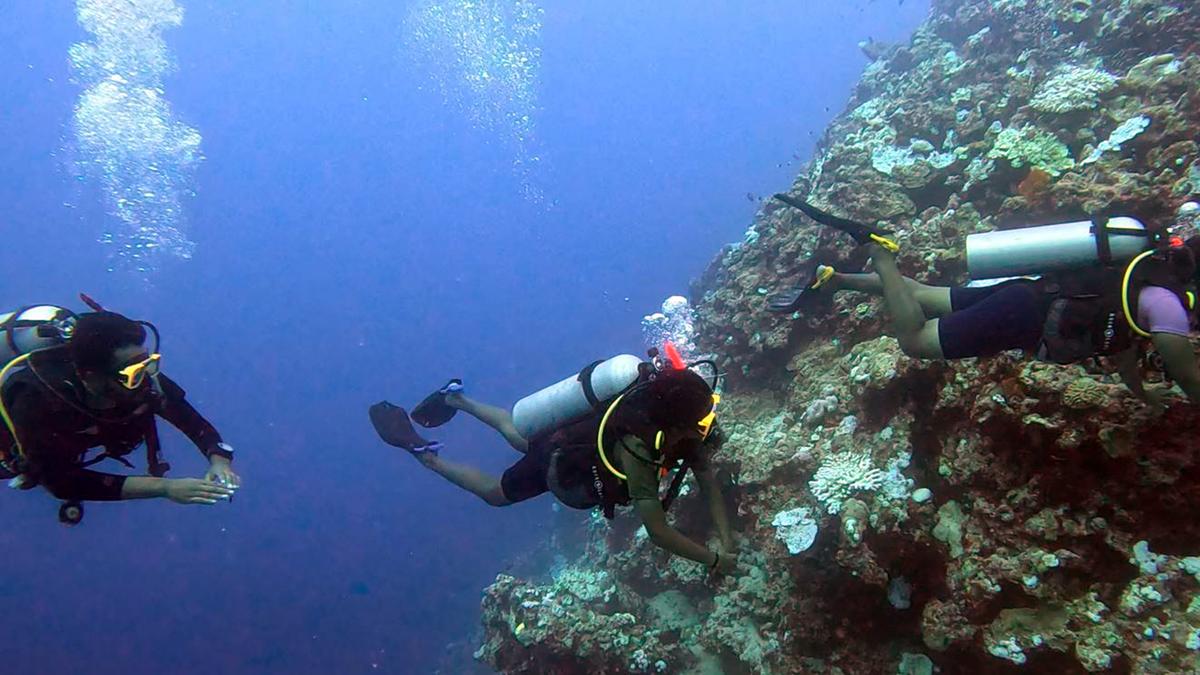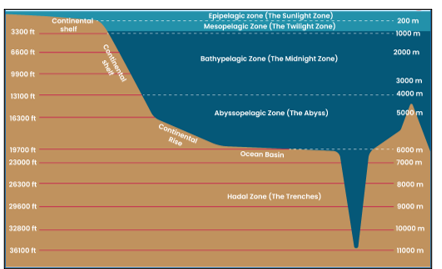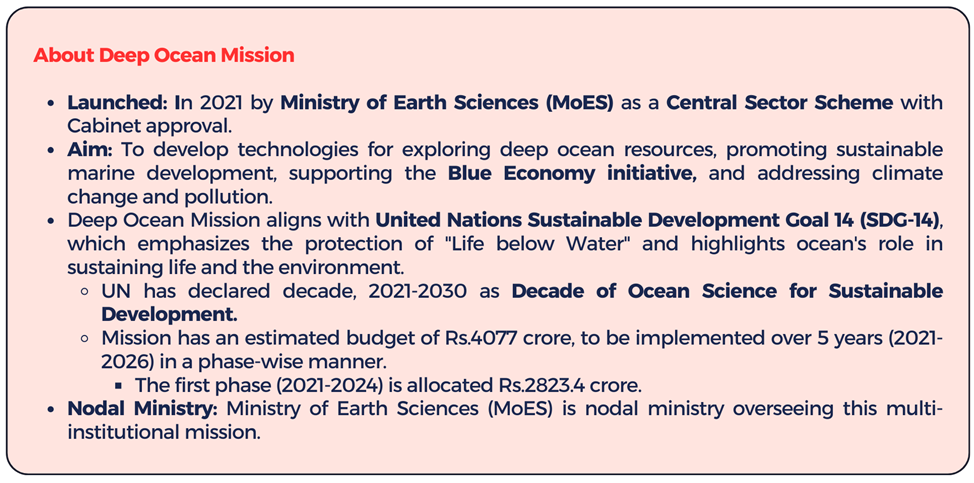- Courses
- GS Full Course 1 Year
- GS Full Course 2 Year
- GS Full Course 3 Year
- GS Full Course Till Selection
- Online Program
- GS Recorded Course
- NCERT (Recorded 500+ Hours)
- Polity Recorded Course
- Geography Recorded Course
- Economy Recorded Course
- AMAC Recorded Course
- Modern India, Post Independence & World History
- Environment Recoded Course
- Governance Recoded Course
- Science & Tech. Recoded Course
- International Relations and Internal Security Recorded Course
- Disaster Management Module Course
- Ethics Recoded Course
- Essay Recoded Course
- Current Affairs Recoded Course
- CSAT
- 5 LAYERED ARJUNA Mentorship
- Public Administration Optional
- ABOUT US
- OUR TOPPERS
- TEST SERIES
- FREE STUDY MATERIAL
- VIDEOS
- CONTACT US
99.999% of Earth’s Deep Seafloor Yet To Be Observed
99.999% of Earth’s Deep Seafloor Yet To Be Observed
22-05-2025

Relevance: GS I; Geography; Oceanography;
Why in the News?
Researchers recently analyzed over 43,000 records of deep-sea dives and found that only about 0.001% of the deep seafloor has been directly studied.
- 99.999% of the remaining portion still remains unseen by human eyes.
- 97% of recorded deep-sea dives had been performed by only five countries: the U.S., Japan, New Zealand, France, and Germany.
What Is the Deep Seafloor?
- The deep seafloor refers to ocean areas deeper than 200 meters (656 feet).
- It includes diverse features: abyssal plains, trenches, ridges, seamounts, and hydrothermal vents.
- Oceans cover 71% of Earth’s surface; about 66% of the planet is classified as deep ocean.
- Deep ocean is cold with an average temperature of only 4°C and is subject to extreme pressure, from about 40 to over 110 times the pressure of Earth’s atmosphere.
-
- Fauna: Squid, krill, jellies, and fish are super abundant in the Mesopelagic Zone (200m-1000m) with about 90% of the world's fish (by weight).
- In the recent study, the geomorphological features like ridges and canyons saw a disproportionate amount of exploration, compared to abyssal plains that dominate the seafloor.
What is the significance of the deep seafloor?
- Biodiversity: Deep sea is home to countless unique species. Most deep-sea life is still undiscovered.
- Climate Regulation: It helps to store carbon and control Earth’s climate. Deep-sea also processes slow down global warming
- Oxygen Production: Oceans, including the deep sea, produce much of the oxygen we breathe.
- Medical & Industrial Potential: Deep-sea organisms can provide new drugs and biotechnologies.
What are the challenges to exploration?
- Extreme Environment: High pressure, low temperatures, and darkness make exploration technically demanding and costly.
- Cost: Deep-sea missions require advanced submersibles, remotely operated vehicles (ROVs), and autonomous underwater vehicles (AUVs), costing millions per expedition.
- Geographic Bias: Nearly all deep-sea dives have occurred within 200 nautical miles of just a few countries, leaving vast regions unstudied.
- Data Gaps: Most of the mapped areas are canyons and escarpments, while abyssal plains and mid-ocean ridges are neglected.
-
- Without comprehensive data, managing fisheries, mineral extraction, and conservation is fraught with uncertainty.
- Unknown habitats and species could be lost before they are even discovered, especially as interest in deep-sea mining grows.

What needs to be done? (Way Forward)
- Technological Innovation: Cheaper, more robust Remotely Operated Vehicles (ROVs), Autonomous Underwater Vehicles (AUVs) could democratize deep-sea exploration.
-
- Advances in imaging, data processing, and remote sensing are needed to scale up observation efforts.
- International Collaboration: A systematic, global initiative is required to map and observe the deep seafloor, involving more countries and diverse regions.



